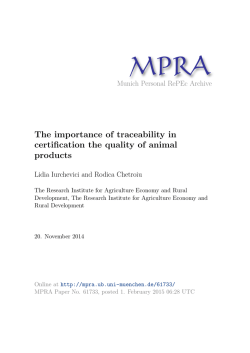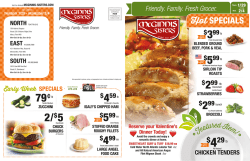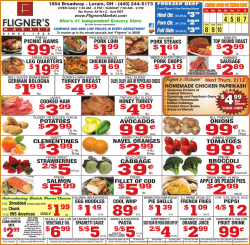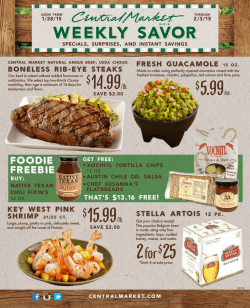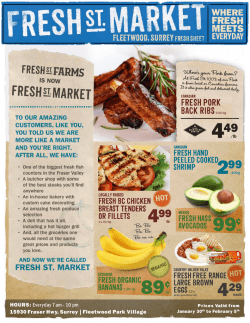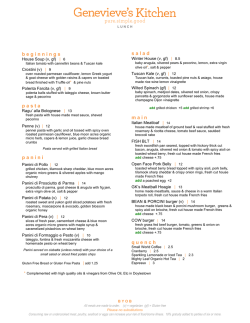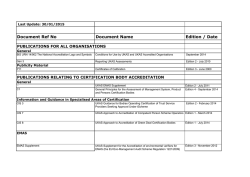
Food Chain Traceability.pptx
Food Chain Traceability Jayanta Dey / VMWare Edwin Heredia / Samsung Mai Le / Yahoo Todd Lipcon / Cloudera Aparna Ramani / Cloudera Jinghai Rao / Samsung Is this on my dinner table? Food recall - Expensive! - - - - 2006 Spinach E.Coli outbreak ($425M) 2007 Florida tomato salmonella ($500M) 2008 Beef recall ($117M) 2009 Peanut butter recall ($1B) - Average cost of recall to supplier: $30M - Estimated economic cost: $152B [Produce Safety Project (part of Pew Charitable Trusts), 2010 report] Food Chain Traceability Identify/track, for a given piece of produce/meat/etc., where it was grown, and every place it has been before reaching your table Market overview Source: Allied Market Research Solution Provider: - - - - Silicon Valley startup - Differentiate on technology - Brand as a higher-end solution (high cost, higher value) 30-40 people >1B items traced in 2009 “Daily Shopper” program - Focus on value for supply chain analysis, not “recall prevention” Solution Provider: - 14-year old Pleasanton, CA company - Acquired in 2010 for $525M by Roper Industries - 8,000 customers (80% of largest US retailers, 90% of largest food distributors, 90% of Fresh shippers) - Supply-chain management with traceability as a feature - Moving to Cloud hosted offering Solution Provider: - Manufacturer of label printers, scanners, RFID, etc - Acquired by Honeywell in 2013 for $600M (Honeywell Scanning and Mobility) - Broad scanning/labeling solutions provider across many industries - Partners with software providers for end-to-end traceability solutions (eg FoodLogiQ, RedLine, etc) Opportunities for Suppliers - Measure supply chain efficiency - Identify problem spots - Exchange early warnings - Work collaboratively to resolve food crises or alerts - Build brand recognition at farm level - Differentiate in an otherwise commodity market - Direct connections to customers - Targeted real-time coupons, ads Opportunities for Retailers - - - 77% of consumers want more data on their purchased food 76% want more information on food origin 74% want more data about how food is grown, processed & manufactured Traceability: Regulatory history - Food traceability started as regulatory response - 2001 Bioterrorism Act - Identify source of food within 24h or face FDA fine - Mandate of traceability by USDA - 2011 Food Safety Modernization Act (FSMA) Produce Traceability Initiative (PTI) - Goal: Industry initiative to develop standards for traceability systems - improves efficiency and visibility of supply chain - Voluntary organization created in 2007 - in response to 2006 Spinach Crisis that had large human and economic costs Market Summary - Whilst born out of response to food safety, market opportunity is large - Existing players: manufacturing / SCM - First wave: cheap ubiquitous hardware - Prediction: Second wave based around software and data - Challenges - - - - Low margin business today focusing just on food tracking Harsh deployment environments for technology (e.g field packing) Small suppliers not participating, limiting food tracking penetration Inability to track/validate authenticity beneath level of large batches - Opportunities - - - - Standardized data models enabling item level tracing Improved analytics reducing cost and driving top-line value Better B2B interop Better targeting of consumers and farms Questions? Appendix Major Milestone and Timing - any estimates we have of future trends? Opportunities: Consumers - Rise of socially conscious consumers (include data here on organic, local, fairtrade) - New ability to validate claims - eg. “Is this fresh fruit really fresh? Were these tomatoes really vine-ripened?” References - - - Food traceability technology market is forecast to report revenues of $10.6B by 2014 - ht tp://www.companiesandmarkets.com/News/Food-and-Drink/Food-traceability-technology-market-is-forecast-toreport-revenues-of-US-10-6Bn-by-2014/NI8741 Tracing Your Food: Farm to Table is Not as Easy as It Sounds. The TFT Reader Investigation Continues... http://www.thefastertimes.com/genericfoodsinvestigation/2010/06/15/tracing-your-food-farm-to-table-is-not-aseasy-as-it-sounds-the-tft-reader-investigation-continues/ Agriculture Giants Use Emergency Budget Bill to Sneak in Big Gifts for Themselves Themselves(http://thinkprogress.org/health/2013/03/21/1753761/agriculture-riders-deregulation/ Dairy Products recalled: Possible Listeria contamination Dietary supplement recalled: Potential Salmonella contamination NC farm recalls 150 products: Possible Listeria contamination Technical factors - Inexpensive availability of mobile devices - RFID scanners, NFC, QR code readers, etc - Broad and cheap network connectivity - - - to farm sites to distribution sites (trucks/GPS, drop sites, etc) to retail locations (3G/4G) Food industry tracking - Forecast to reach $10.6B revenue in 2014 - Boutique technology providers - Existing producers http://www.companiesandmarkets.com/News/Food-and-Drink/Food-traceability-technology-market-is-forecast-to-report-revenues-of-US-10-6Bn-by-2014/NI8741 - - - already had “internal traceability” (NB: need to explain intra-firm vs inter-firm tracing) starting to market it to horizontals usually stuff like Excel (step up from pen+paper) - Label makers, KwikLok - http://www.thepacker.com/fruit-vegetable-news/ marketing-profiles/Kwik-Lok-develops-fresh-producetraceability-advancements-131532848.html - already have product attach point Solution Provider: Redline - - - - - 17 year old company based in Santa Clara, CA Automate over 120 produce growers, packers, and shippers across North America Electronic tracking, record keeping, integrated solution PTI Compliant E2E solutions - software, hardware, professional services, planning, installation, training, launch of system, online support Solution Provider: TraceOne - - Platform powers $300B/yr in activities, Boston, MA Product Lifecycle management for 35 global brands, network of over 20,000 manufacturers, suppliers - Creates transparency in supply chains - Companies can exchange early warnings and collaboratively resolve food crises or alerts - Provides a single view of the complete network with each facility’s compliance status clearly visible Consumer Benefits - Target healthier food - - - Leverage interest in local, organic Avoid eating contaminated food Feed “information hunger” - - Is this “fresh” fruit really fresh? Were these tomatoes really “vine-ripened?” Produce Traceability Initiative (PTI) - Voluntary standards organization created in 2007 - - - - - Response to the 2006 Spinach Crisis that had large human and economic costs Sponsored by Canadian Produce Marketing Association, GS1 US, Produce Marketing Association and United Fresh Produce Association Goal: Develop a standardized industry approach to enhance the speed and efficiency of traceability systems for the future Working groups: Implementation, Master Data, Industry Communications, and Technology PTI recommendations and best practice documents: - Use of GS1 System standards for product information - Case level tracking - Electronic recordkeeping - Farm to Store identification procedures
© Copyright 2026
